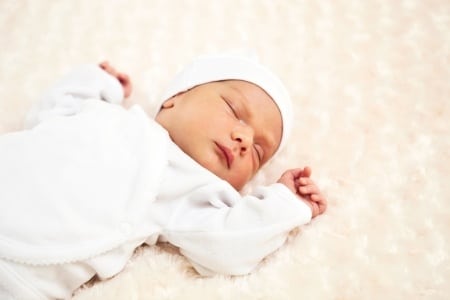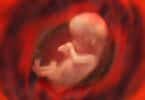SIDS is the leading cause of death among infants aged one month to one year. And while it does often occur in homes where babies are placed in unsafe sleeping environments, there is still a large number of seemingly healthy babies who pass away from this mysterious syndrome every year. Now, researchers are theorizing that these babies may have differences in the brainstem chemistry from other infants that may lead to the sudden and unexpected death during sleep.
Hannah Kinney, professor of pathology at Harvard Medical School and Boston Children’s Hospital and fellow researchers also say that these underlying brain anomalies can be detected and treated to prevent the sudden deaths.
Studies over the past 20 years have found that infants whose deaths are usually termed under SIDS and who die suddenly without any explanations have brain abnormalities that impair the control of breathing, heart rate, blood pressure and temperature control during sleep. The researchers say that these brain defects prevent the baby from rousing when they re-breathe too much carbon dioxide due to inadequate ventilation, breathe too little oxygen or become overheated from over bundling.
For the current research the team tried to determine if all the infants who passed away from SIDS were truly normal. They reviewed the data of 71 infants who died suddenly and unexpectedly, were autopsied at the San Diego County Medical Examiner’s office from 1997 to 2008. Their brainstem samples were also examined during the analysis.
The researchers grouped the infants according to sleep circumstances— those that were considered likely to generate asphyxia and those that were not— based upon the investigation reports.
They compared 15 infants with SIDS whose deaths were deemed not to involve asphyxia (group A), 35 infants with SIDS whose deaths were possibly asphyxia-related (group B) and 9 infants who clearly died from other causes (controls). Such infant deaths were excluded that involved exposure to drugs or extreme temperature.
In the Group A and Group B, the investigators found Brainstem neurochemical abnormalities involving serotonin, serotonin receptors, GABA receptors and 14-3-3 (a protein that regulates serotonin).
Both groups also had significant biochemical differences from the control group.
“Even the infants dying in a potentially asphyxia-generating situation had an underlying brainstem abnormality that likely made them vulnerable to sudden death if there was any degree of asphyxia,” Kinney said. “The abnormality prevents the brainstem from responding to the asphyxial challenge and waking.”
The authors say that this research confirms that not all infants who die in compromised sleep environments are normal and there are underlying causes that sometimes may make an infant more vulnerable to sudden death.
“Certainly, there are compromised sleeping environments that can cause any baby to die, such as entrapment in the crib, but if it’s just sleeping face down, the baby who dies may have an underlying brainstem vulnerability,” said Kinney. “We have to find ways to test for this underlying vulnerability in living babies and then to treat it. Our team is focused now upon developing such a test and treatment.”
The research however adds that this does not reduce the value of ensuring the baby sleeps in the correct position. She stresses that the “safe to sleep” campaign has saved many lives, including of babies who are vulnerable.
“Safe sleep practices absolutely remain important, so these infants are not put in a potentially asphyxiating situation that they cannot respond to,” she said.
The study was funded by the National Institutes of Health, First Candle, the CJ Foundation for SIDS, the Jacob Neil Boger Foundation for SIDS, the Marley Jaye Cerella Foundation for SIDS, River’s Gift and the Intellectual and Developmental Disabilities Research Center at Boston Children’s Hospital.
The reports have been published in the December issues of Pediatrics.







